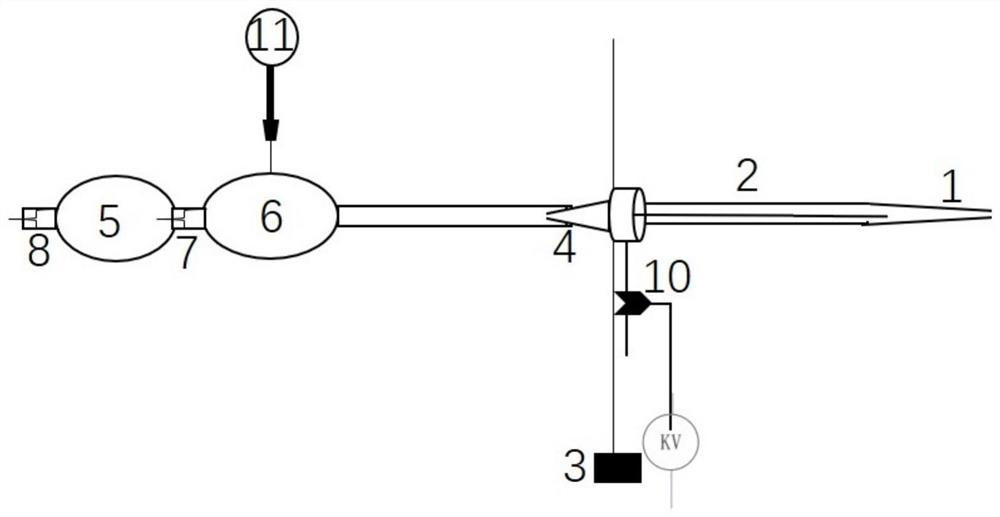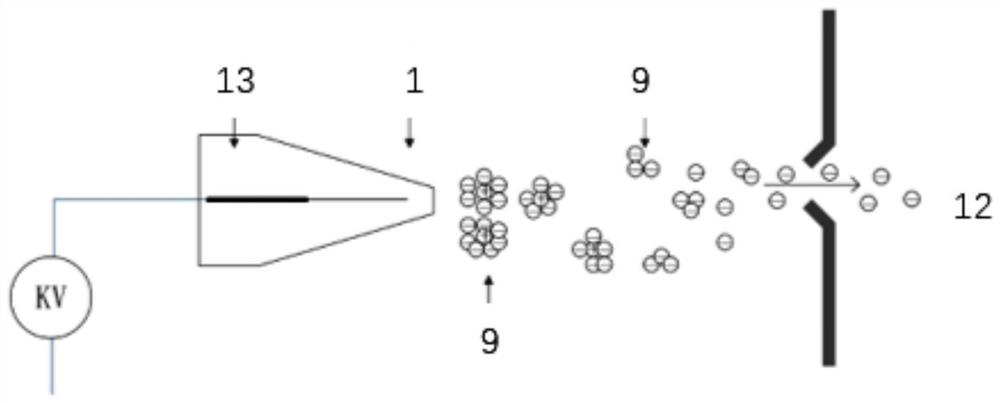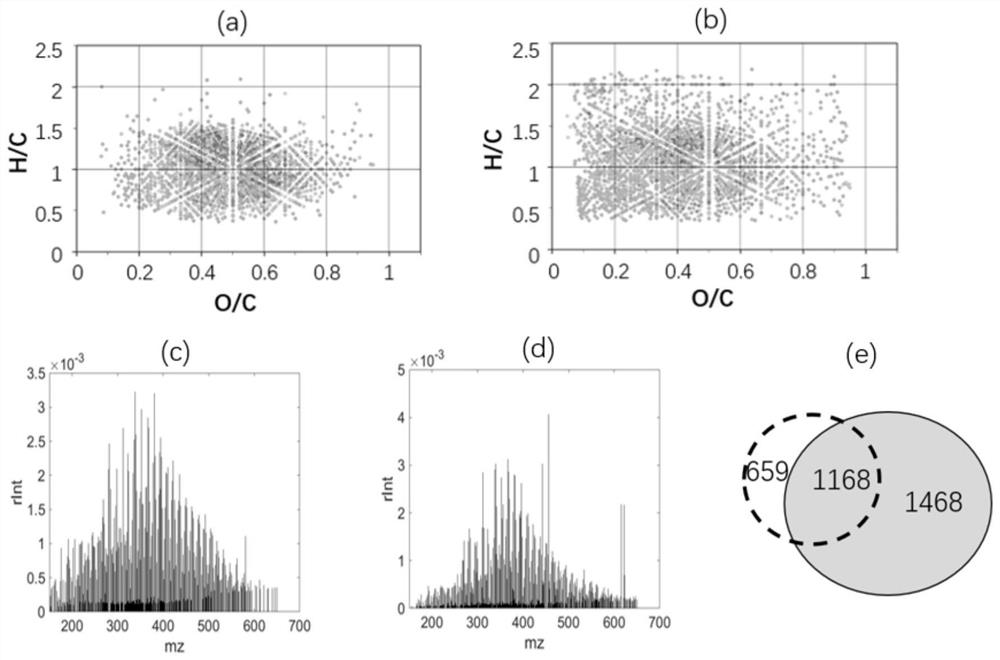Nanoliter spray-FTICR-MS analysis method and device for organic matters dissolved in environmental solid sample
A -FTICR-MS, nano-spray technology, applied in the direction of measuring devices, analyzing materials, and material analysis by electromagnetic means, can solve the problems of sample collection limit, signal selectivity loss, and inability to represent dissolved organic matter, etc., to achieve High chemical inertness and electrical conductivity, reduced interstitial water loss, and reduced interstitial water collection
- Summary
- Abstract
- Description
- Claims
- Application Information
AI Technical Summary
Problems solved by technology
Method used
Image
Examples
Embodiment 1
[0045] Such as figure 1 and figure 2 As shown, this embodiment provides a nanoliter spray-FTICR-MS analysis device for dissolved organic matter in an environmental solid sample, including a nanoliter spray device and a Fourier transform ion cyclotron resonance mass spectrometer.
[0046] The nano-liter spray device is installed on the fixed frame 3 as a whole, mainly including glass nozzle 1, conductive needle 2, adapter rubber head 4, double pressurized ball 5, gas storage bag 6, one-way valve one 7, one-way valve two 8. Metal conductive clip 10 and pressure gauge 11.
[0047] The adapter rubber head 4 is a hollow lumen structure, one end is sleeved on the end of the glass nozzle 1 away from the nozzle, the other end is connected to one end of the gas storage bag 6 through a pipeline, and the other end of the gas storage bag 6 is connected to the double-connected nozzle through a one-way valve 7. One end of the pressurized ball 5 is connected, the other end of the duplex p...
Embodiment 2
[0053] This embodiment provides a nanoliter spray-FTICR-MS analysis method for dissolved organic matter in an environmental solid sample, using the analysis device described in Example 1, specifically including:
[0054] First, take 1 μL of sample interstitial water, add methanol to prepare a sample solution 13 with a ratio of 1:10 of interstitial water and organic solvent, take 5 μL and put it into glass nozzle 1; then connect rubber adapter 4, and insert conductive needle 2 into glass nozzle 1 To the tip, connect the double pressurized ball 5, the gas storage bag 6 and the rubber adapter 4, connect the pressure gauge 11 at the gas storage bag 6; fix the device loaded with the sample solution 13 on the fixed frame 3, Adjust the direction and position of the glass nozzle 1 to align with the injection port 12 of the Fourier transform ion cyclotron resonance mass spectrometer; ensure that the metal conductive clip 10 is grounded, increase the voltage of the ion cyclotron resonanc...
Embodiment 3
[0058] Figure 4 Shown is the same flow process and method of implementation example 2, the molecular type distribution graph measured after ten times dilution of the sample solution, as can be seen, the ten times diluted sample solution can still be obtained by this method compared with the traditional method ( image 3 a) More abundant and comprehensive molecular formula.
PUM
 Login to View More
Login to View More Abstract
Description
Claims
Application Information
 Login to View More
Login to View More - R&D
- Intellectual Property
- Life Sciences
- Materials
- Tech Scout
- Unparalleled Data Quality
- Higher Quality Content
- 60% Fewer Hallucinations
Browse by: Latest US Patents, China's latest patents, Technical Efficacy Thesaurus, Application Domain, Technology Topic, Popular Technical Reports.
© 2025 PatSnap. All rights reserved.Legal|Privacy policy|Modern Slavery Act Transparency Statement|Sitemap|About US| Contact US: help@patsnap.com



